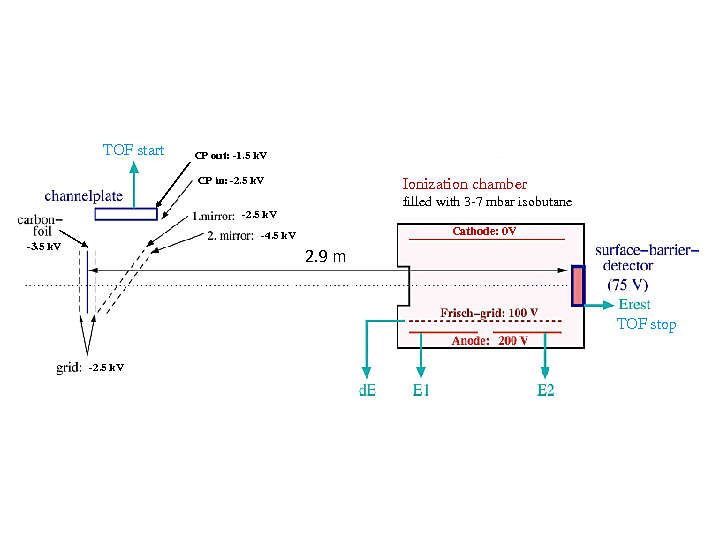Time-of-Flight setup
The Time-of-Flight (TOF) setup is used for the detection of isotopes with masses larger than 209 amu. For those isotopes no stable isobars exist and hence no additional isobar separation stage (such as the GAMS) is required. The ions are identified by measuring the TOF of the ions, the energy loss in gas and the remaining energy.
Ions with the same m/q ratio could not be distinguished if only the TOF was measured. This is evident, if the TOF is expressed in terms of the magnetic rigidity B⋅r which is fixed for all ions entering the TOF path:
TOF = m/q⋅L/(B⋅r) ∝ m/q
with L being the distance from the start to the stop detector of the TOF path, currently set to 2.9 m. In order to identify ions with similar m/q ratio an ionization chamber with a segmented anode filled with 2 -7 mbar isobutane is used. The segmented anode allows one to measure the energy loss which depends on the atomic number of the ions. Consequently, this provides an additional possibility for ion identification.
The start signal for the TOF measurement is generated by a micro channelplate detector. When passing through the thin carbon foil of the start detector, the ions produce secondary electrons which are deflected towards the channelplate detector by several mirror grids (see figure 1). The ions are stopped in a silicon surface barrier detector which is located at the end of the ionization chamber. The kinetic energy of the ions is used for the creation of electron-hole-pairs and creates a signal for the remaining energy which additionally is used as stop signal.
